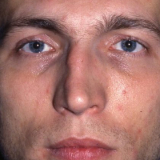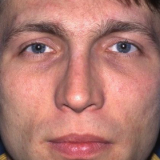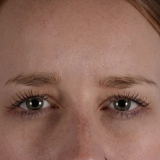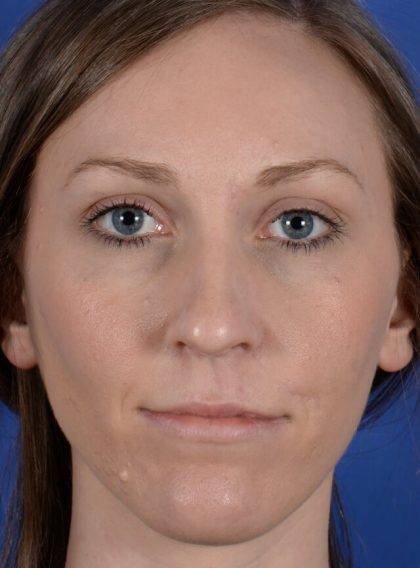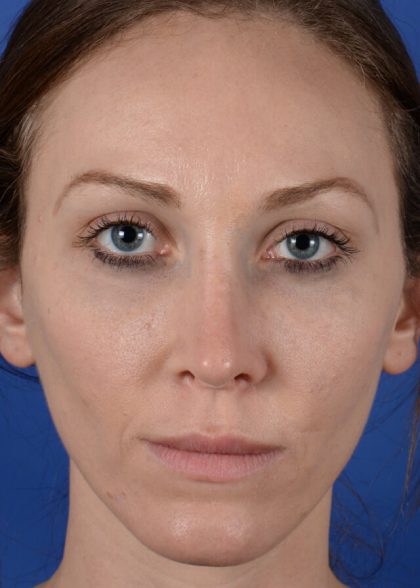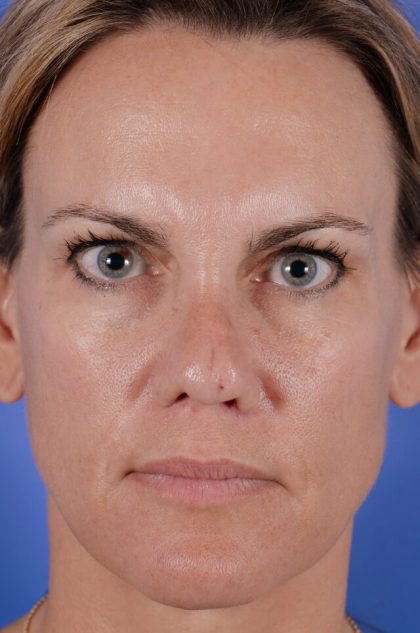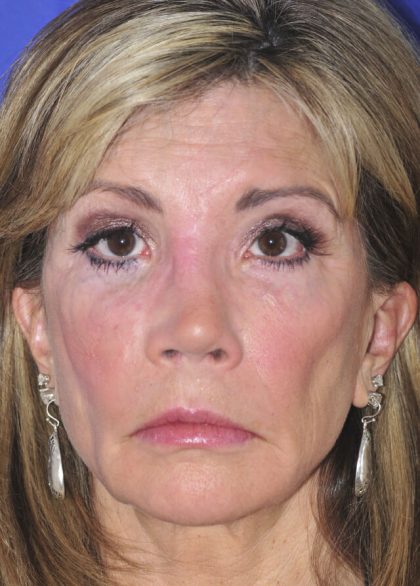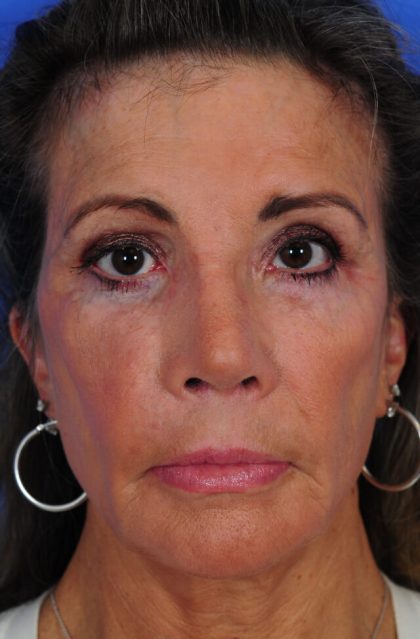Rhinoplasty
Conveniently located to serve the areas of Englewood and Denver, CO

Rhinoplasty, also known as a nose job, is a surgical procedure that reshapes the nose to improve cosmetics and if necessary, nasal function as well. The nose plays a very prominent central role in the overall appearance of the face. Unfortunately, for many, the shape or size of their nose can leave them feeling a bit insecure about the way they look.
At Colorado Facial Plastic Surgery, Dr. Mario J. Imola and Dr. David M. Kowalczyk offer various types of rhinoplasty that can help patients feel confident every single time they look in the mirror. They offer a wide range of options, including primary rhinoplasty, revision rhinoplasty, and ethnic rhinoplasty. For more information, call (303) 839-7980 or contact us online.
Contents
- 1 Rhinoplasty Overview
- 2 Septoplasty
- 3 Types of Rhinoplasty
- 4 Before and After Photos
- 5 Benefits of Rhinoplasty and Expectations
- 6 The Rhinoplasty Consultation
- 7 Choosing the Right Rhinoplasty Surgeon
- 8 The Rhinoplasty Procedure
- 9 What to Expect after Rhinoplasty – The Post-Surgical Course
- 10 Ethnic Rhinoplasty Considerations
- 11 Revision Rhinoplasty vs Primary Rhinoplasty
- 12 Cost of a Rhinoplasty in Denver
- 13 FAQ
- 13.1 What are the expectations following rhinoplasty?
- 13.2 Open vs closed rhinoplasty?
- 13.3 What type of anesthesia is used for rhinoplasty?
- 13.4 When will the final result be visible following rhinoplasty?
- 13.5 How does male rhinoplasty differ from nose reshaping in women?
- 13.6 What are the complications that can occur following rhinoplasty?
- 13.7 Can I combine nose surgery with other facial plastic surgery procedures?
- 13.8 What about non-surgical rhinoplasty using injectable fillers?
- 14 References
Rhinoplasty Overview
Rhinoplasty is used to improve the appearance of the nose or for functional purposes to improve breathing or in many patients to correct both form and function. It is widely considered one of the most challenging plastic surgery procedures to master and obtain consistently good outcomes.
Septoplasty
Closely related to rhinoplasty is the septoplasty procedure which refers to the surgical correction of a deviated or deformed nasal septum. The septum is a critical internal midline structure consisting of a thin cartilage and bone plate covered on each side with a mucosal lining. The septum plays a crucial role in supporting the foundation of the nose and when deformed is usually the main cause of unfavorable external appearance and breathing obstruction. Corrections to both the external nasal framework and the internal nasal septum are often performed together as a septorhinoplasty surgery.
Types of Rhinoplasty
Rhinoplasty can be performed in different patients of varying ethnicity with unique aesthetic challenges and goals either as a first-time procedure or as a repeat surgery. Moreover, a variety of different techniques are used depending on the preference or experience of the surgeon. As a result, rhinoplasty can be divided into a dozen or more different subtypes. We have divided rhinoplasty into a few relevant groups designed to help the interested patient understand the principles of rhinoplasty without getting too overloaded with information.
- Primary Rhinoplasty: This is a surgery performed to improve nasal form and or function for the first time. Primary rhinoplasty is the best opportunity to ‘get it right’. All too often we see patients who took the initial rhinoplasty experience too lightly and present to our office for a revision rhinoplasty.
- Revision Rhinoplasty: This is a surgery performed following an initial primary rhinoplasty designed to improve persisting problems with form and/or function. Revision rhinoplasty can be either minor or major and is numbered as a 1st, 2nd, 3rd, and so on. If primary rhinoplasty is considered a challenging procedure in the world of plastic surgery, then revision rhinoplasty ranges from difficult to extremely difficult depending on the nature and number of deformities. In fact, many nose surgeons eventually give up on performing revision rhinoplasty and limit their practices to primary rhinoplasty alone.
- Ethnic Rhinoplasty: This refers to rhinoplasty performed in non-Caucasian patients with varying ethnicities such as Asian, Hispanic, or Black. When planning rhinoplasty in these patients it is critical to establish whether the unique ethnic features of the nose should be preserved, partially modified, or aggressively changed depending on the patient’s desires.
Before and After Photos
We ask you to visit our before and after photo gallery which demonstrates the vast experience we have with all different types of rhinoplasties. The before and after gallery may be the most crucial factor when determining whether the surgeon can meet your expectations, so when reviewing the photos, it is important to analyze them carefully.
- Are the photographs high quality with good resolution?
- Is the lighting the same in the after photos as it is in the before photos?
- Are all the different views shown with the correct framing and standard angles of view?
- Has adequate time passed following surgery to show the final result?
- Are details regarding the actual procedures performed provided?
- Do the cases shown represent an “average” or are they cherry-picked cases showing the best outcomes?
- Is there an adequate volume of work shown?
Benefits of Rhinoplasty and Expectations
Rhinoplasty has many benefits to improve nasal cosmetics as well as nasal obstruction. The nose sits center stage on the face. Ideal aesthetics include proportional size (length, width, projection) that fits the overall size of the face and also blends well with the person’s body habitus. The shape of the nose is a personal choice and your goals in this regard should be discussed in detail with your prospective surgeon. Important considerations include the shape of the nasal profile, the position and rotation of the nasal tip, the size and definition of the nasal dome/tip, and the shape of the nostrils.
Many patients are self-conscious due to unfavorable nasal cosmetics. A well-executed rhinoplasty surgery will help alleviate some of these anxieties and improve self-confidence. In addition to the nasal form, compromised nasal function can also be improved with septorhinoplasty surgery. Obstruction to nasal airflow can result from multiple deformities including septum deviation, internal or external nasal valve narrowing, or nasal turbinate enlargement all of which can be corrected with specific maneuvers during rhinoplasty surgery.
The Rhinoplasty Consultation
The process followed during the rhinoplasty consultation is crucial to achieving a successful outcome. Both the patient and the surgeon have important objectives during this process. The patient should come prepared with a clear list of cosmetic goals and priorities and thoroughly discuss them with the prospective surgeon. If there are any functional problems with the nose they should also be discussed. The patient needs to determine if his or her goals have been carefully considered by the surgeon and whether the surgeon can achieve those goals. The surgeon needs to complete an accurate history and physical examination to determine what
Choosing the Right Rhinoplasty Surgeon
- Training: Ideally, following obtaining a medical degree, the surgeon should have completed an accredited residency in otolaryngology head and neck surgery followed by fellowship training.
- Credentials and Certification: It is important to verify that the surgeon holds a valid medical license in the state of practice, certification in a head and neck surgery
- Before and After portfolio.
- Case Volume and Number of Years in Practice: In general, in order to be proficient in rhinoplasty as a whole the surgeon needs to perform a critical case volume on a consistent basis. The minimum is generally recognized as 50 to 75 cases annually and if revision rhinoplasty is a special interest, then at least 25 revision cases per year are necessary to achieve consistently good results.
- Reviews: Excellent past outcomes should be verified by multiple verified reviews from past satisfied patients. These should be posted on multiple online forums such as Google, RealSelf, Yelp, etc.
- The Consultation Process: The consultation process should fulfill several important criteria. First and foremost is the need for the patient to convey their goals in detail and just as important for the surgeon to understand what the patient is looking for followed by a clear plan as to how the results will be achieved.
Dr. Imola and Dr. Kowalczyk check all the boxes in regard to training, credentials, and certification. Both have accrued a large portfolio of before and after photos and they have a combined 40+ year history in head and neck surgery, facial plastic surgery, and rhinoplasty with a special focus on revision rhinoplasty.
The Rhinoplasty Procedure
Approach: Closed vs Open (1),(2),(3),(4)
Closed rhinoplasty (also called internal rhinoplasty) uses incisions inside the margins of the nostrils. Using these incisions, the skin and soft tissue envelope is elevated off the bone and cartilage framework which is then modified to achieve the desired changes in shape. The benefits of closed rhinoplasty are generally accepted as less swelling following surgery which resolves more quickly while the disadvantages primarily involve restricted visibility and access to the bone and cartilage framework.
Open rhinoplasty (also referred to as external rhinoplasty) uses the same internal incisions as closed rhinoplasty and adds an additional short skin incision across the columella at the base of the nose. This dramatically improved access by allowing the skin envelope to be retracted up onto the bridge of the nose. The downside of the open approach is prolonged swelling and a small skin scar on the columella that usually heals very well but can sometimes be visible to the close-up observer.
Modifying the Bone and Cartilage Framework (5)
Following the approach, a combination of rasps, bone chisels, and powered instrumentation is used to remove and reshape the bone and cartilage elements. In addition, suture reshaping of the cartilage elements is performed in conjunction with strategic cartilage graft placement to create the desired changes in shape and size.
Modifying the Skin and Soft Tissue Envelope
The ideal skin and soft tissue cover in a prospective rhinoplasty patient is one of intermediate thickness. Skin that is too thick tends to hide the details put into the bone-cartilage framework resulting in an amorphous appearance. Thick skin can be thinned within limits during surgery. On the other hand, skin that is too thin can reveal any contour irregularities in the bone-cartilage framework. Thin skin can be managed during surgery using fascia grafts or fat grafting before or after surgery.
Nasal Base and Nostril Modifications
The nasal base can be modified to improve an overly prominent columella or to reduce the shape or width of the nostrils. When modifying the nostrils, caution should be exercised to avoid overly aggressive changes or scarring that is difficult or impossible to correct.
Structure Rhinoplasty and Cartilage Grafts (3),(6)
Structure rhinoplasty refers to a surgical philosophy that prioritizes preservation and, in most cases, increases the structural support of the bone-cartilage framework. This is achieved using cartilage grafts placed into key locations where they provide support but are not visible or add to the bulkiness of the nose.
Dorsal Preservation Rhinoplasty (6)
Classical correction of a hump deformity involves the removal of the excess bone and cartilage off the bridge of the nose. Once the appropriate height of the bridge has been achieved the cut edges of bone and cartilage need to be reconstructed. Dorsal preservation rhinoplasty aims to preserve the basic bone and cartilage elements at the very top of the bridge and to lower them by removing strips of bone and cartilage along each side of the nasal side wall and then dropping the bridge segment down into the desired level of projection.
Drs Imola and Kowalczyk at Colorado Facial Plastic Surgery have over 40 years of combined experience using all the current techniques available in rhinoplasty. They administer the only AAFPRS fellowship training program in the Rocky Mountain region and are responsible for providing up-to-date rhinoplasty training for the yearly fellow trainees.
What to Expect after Rhinoplasty – The Post-Surgical Course
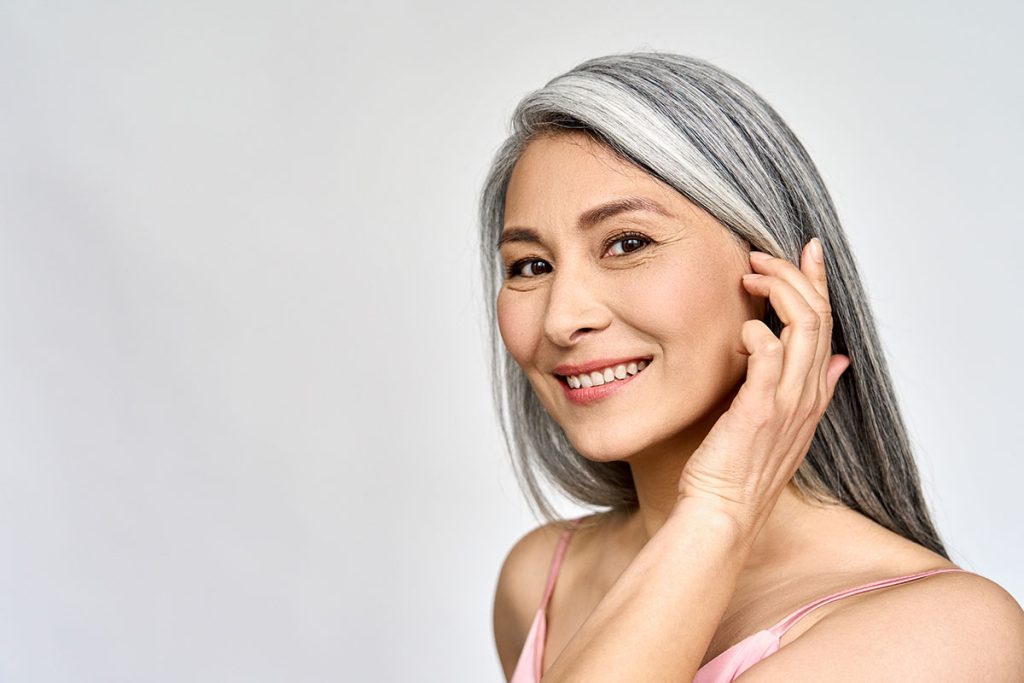
During the first week following rhinoplasty, the patient’s nose is bandaged with one or more stents. The tip is bandaged to minimize swelling, the bridge has a firm plastic stent that stabilizes the sidewalls, the nostrils often have thin plastic stents secured with suture and inside the nose, there may be a thin flexible silastic stent stabilizing the septum. Nasal packing is no longer used so breathing through the nose is possible but usually, there is some stuffiness due to swelling. The stents are all removed at the first visit 1 week following surgery along with a few non-resorbing sutures.
Most stitches are self-resorbing and will fall out over the following week or two. Pain is generally moderate at most during the first couple of days and then becomes mild. Most patients require modest doses of narcotics for 3 or 4 days and then Tylenol is adequate for pain control. At Colorado Facial Plastic Surgery, we ask that the patient follow a strict protocol of medications, activity modification, and wound care to optimize outcomes. Everything is reviewed at the preoperative appointment and detailed instructions, prescriptions and supplies are provided. The swelling and bruising will vary depending on each patient’s response. Usually by 2 to 3 weeks most of the swelling has subsided but some swelling will persist for months. Bruising follows a similar course and can often be assisted with pulsed broad bandwidth light therapy.
Ethnic Rhinoplasty Considerations
Ethnic rhinoplasty refers to nasal reshaping surgery performed in non-Caucasian patients. Different ethnic groups have nasal features that set them apart. For example, the black nose tends to have less projected, wider nasal bridge, and broader nostrils. Caucasian patients tend to show higher bridges, a more projected nasal tip, and a narrower nostril base. Asian and Hispanic noses tend to fall into an intermediate group.
The most important consideration with Ethnic rhinoplasty is clearly defining what changes, if any, the patient wants to make in the key features that define their ethnic group and the time to do this is early on in the consultation process. Once this has been established, there are unique procedures during the surgery that enable the surgeon to achieve the desired goals. Dr. Kowalczyk and Dr. Imola have extensive experience with Ethnic rhinoplasty and pride themselves in paying close attention to the patient’s desires in order to deliver results that meet their expectations. Please see our Before and after photos to view results and refer to the separate page dealing with Ethnic Rhinoplasty for more details.
Revision Rhinoplasty vs Primary Rhinoplasty
Revision rhinoplasty is a unique subset of rhinoplasty in general that carries unique challenges. Consistently good results are difficult to achieve and in fact, many rhinoplasty surgeons choose not to perform major revisions sending them instead to surgeons who focus on revision rhinoplasty. In order to get good outcomes, the surgeon needs to be performing revision rhinoplasty on a regular basis.
Some of the challenges in revision rhinoplasty include an often over-reduced bone-cartilage framework and contracted soft tissue envelope that resists re-expansion back to an appropriate size, complex deviations, and contour irregularities that produce asymmetry which can often be made better to a degree and rarely made perfectly straight, compromised skin and severe nasal base deformities such as retracted nostril margins, a hanging or tilted columella and nasal function that is so compromised only partial improvements are possible. Additionally, cartilage and fascia grafts are required and need to be obtained from other body areas such as the ear or rib. When planning revision rhinoplasty, it is imperative to have realistic expectations.
Cost of a Rhinoplasty in Denver
The cost of rhinoplasty can vary widely based on the level of difficulty, the surgeon’s experience, and the goals desired. Surgeons’ fees for primary rhinoplasty will range from $5,000 – $12,000 whereas major revision rhinoplasty will range from $10,000 – $30,000. Anesthesia fees, facility fees, and supplies typically add 40% – 50% to the final cost.
For more information about rhinoplasty, and to book your personal consultation at Colorado Facial Plastic Surgery, call (303) 839-7980 or use this contact form to get in touch.
FAQ
What are the expectations following rhinoplasty?
One should expect an overall favorable result in most primary rhinoplasty cases. Please note, however, that perfection is unrealistic and it is not uncommon for some patients to desire some additional minor improvements. which can be done with a minor revision.
Open vs closed rhinoplasty?
A minority of surgeons used the closed rhinoplasty approach for all of their rhinoplasty cases. The surgeons at Colorado Facial Plastic Surgery tend to reserve the closed approach for cases with strong intrinsic tip support and where the degree of reshaping required is more subtle.
What type of anesthesia is used for rhinoplasty?
Minor surgery can be performed with oral sedation and local anesthesia for simplest cases or under intravenous sedation (twilight anesthesia) for somewhat more involved cases. Complete primary and especially major revision surgery is best done under general anesthesia.
When will the final result be visible following rhinoplasty?
The swelling following rhinoplasty improves very quickly so that by 4 to 6 weeks following surgery approximately 75% of the initial swelling that occurred has resolved. However, the rate of improvement slows and the remaining swelling takes several additional months to work its way out. Generally, most surgeons agree that at 1 to 1.5 years the tissue fluid in the soft tissues and the state of the blood vessels has stabilized. At this point, provided that there are no structural changes in the cartilage framework going forward, then what you see should be what you get.
How does male rhinoplasty differ from nose reshaping in women?
The male patient typically has unique features from women and their goals are often different. For example men often do not to have an overly small nose, tend to prefer a straight profile or even mild prominence to the bridge. As a result, the surgeon needs to honor these goals in order to achieve a successful outcome.
What are the complications that can occur following rhinoplasty?
Early complications include uncontrollable bleeding following surgery or an infection.7 Uncontrollable bleeding occurs very rarely. Infection is a more common complication and usually shows itself within a week and up to 4-6 weeks following surgery. At Colorado Facial Plastic Surgery we take special precautions to mitigate infection risk and ask that patients adhere to a strict postoperative wound care process. The long term complications include problems with nasal breathing obstruction or an unsatisfactory cosmetic result.
Can I combine nose surgery with other facial plastic surgery procedures?
Rhinoplasty can be combined with other cosmetic surgery procedures such as chin augmentation, submentoplasty, and blepharoplasty provided the combined surgery time does not become excessive.
What about non-surgical rhinoplasty using injectable fillers?
Non-surgical rhinoplasty using injectable fillers can be used selectively to improve the shape of the nose. Hyaluronic acid fillers such as Juvederm, RHA, etc can be used to improve the profile, correct contour deficits or improve asymmetry all within limits. Keep in mind that the nose will always be bigger following injection with fillers. The surgeons at Colorado Facial Plastic Surgery recommend a judicious approach using small volumes of fillers and not on a regular basis. Additionally, fillers can confuse the preoperative analysis prior to rhinoplasty and if there are any Fillers in place it is a good idea to dissolve them prior to making the final preoperative game plan.
References
- Sheen J, Anitra Peebles Sheen. Aesthetic Rhinoplasty. CRC Press; 1998.
- Gunter JP, Rohrich RJ. External Approach for Secondary Rhinoplasty. Plastic and Reconstructive Surgery. 1987;80(2):161-173. doi:https://doi.org/10.1097/00006534-198708000-00001
- Johnson CMJ, Toriumi DM, Daniel RK. Open Structure Rhinoplasty. Plastic and Reconstructive Surgery. 1990;86(3):594. https://journals.lww.com/plasreconsurg/Citation/1990/09000/Open_Structure_Rhinoplasty.38.aspx
- Tardy ME. Rhinoplasty: The Art and Science. Saunders, Philadelphia, 1997.
- Daniel RK, Springerlink (Online Service. Mastering Rhinoplasty : A Comprehensive Atlas of Surgical Techniques with Integrated Video Clips. Springer Berlin Heidelberg; 2010.
- Toriumi DM. Structure Rhinoplasty.; DMT Solutions, Chicago, 2019.
- Toriumi DM, Kowalczyk DM, Cristel RT, et al. Evaluation of Postoperative Infection Rates in 3084 Rhinoplasty Cases Using Antibiotic Soaks and/or Irrigations. Facial Plastic Surgery & Aesthetic Medicine. 2021;23(5):368-374. doi:https://doi.org/10.1089/fpsam.2020.0465
